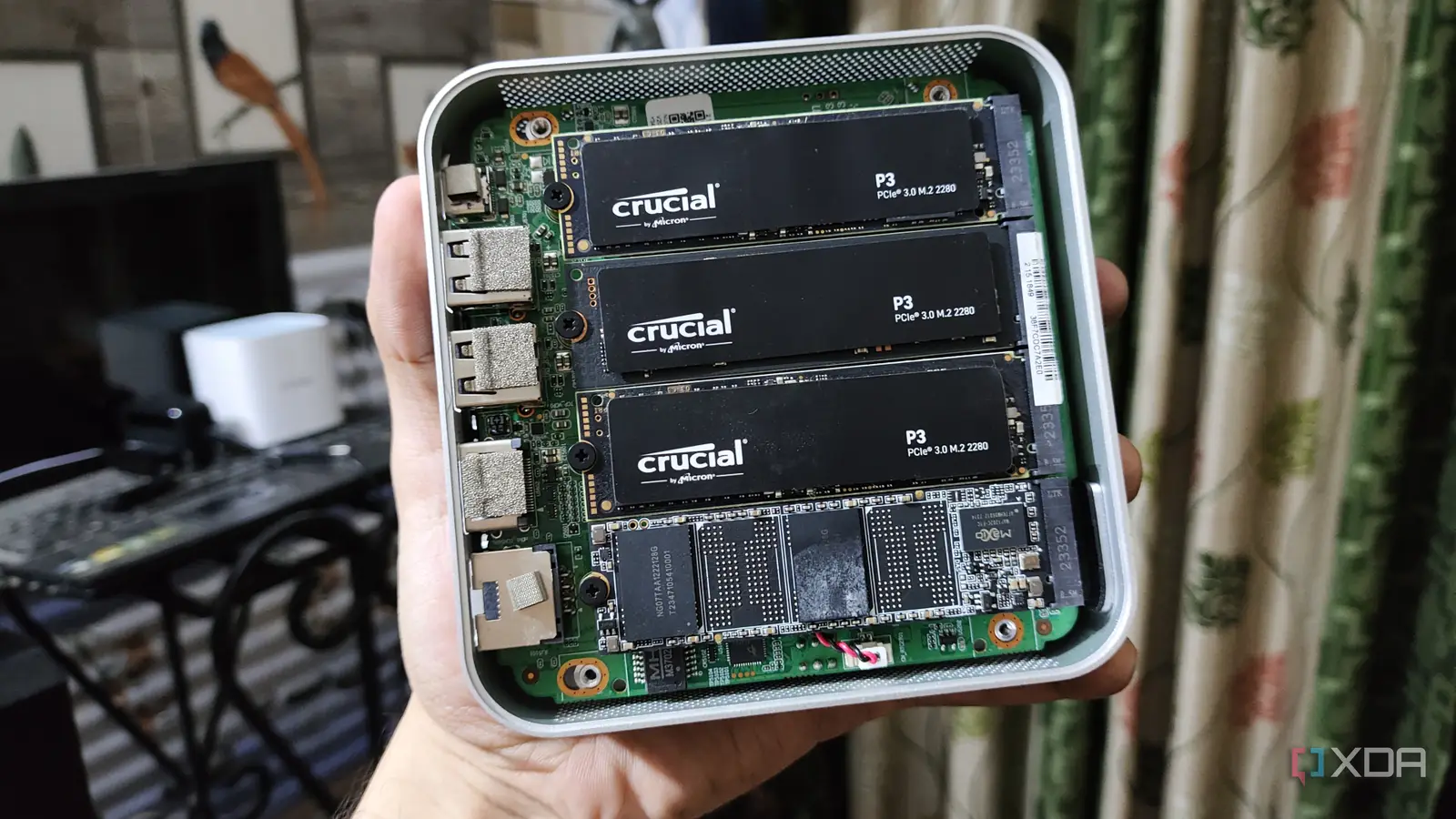
When it comes to sharing files across different machines, there are two protocols that most home labbers and tinkerers consider first: NFS and SMB. Both get the job done, but they serve different needs and play better with different systems. I’ve tried both in my own setup, and while NFS has its place, I often find myself going back to SMB because it simply works more smoothly for my daily workflow. For me, file sharing should be something I barely think about, not a chore that eats into my time.
The real measure of a file-sharing protocol is how well it works for your needs.
There’s no shortage of debates online about which protocol is “better,” but the truth is that it depends on what you value most. For me, ease of use, compatibility, and stability matter more than theoretical benchmarks. That’s why I end up preferring SMB most of the time, especially in mixed environments where I’m juggling Windows, macOS, and Linux machines. If the goal is to access files quickly without constant adjustments, SMB is the protocol that delivers.
Cross-platform compatibility matters more than benchmarks
I need seamless access across Windows, macOS, and Linux
One of the biggest reasons I stick with SMB is its universal compatibility. Windows uses SMB as its native file-sharing protocol, so there’s no extra configuration needed to get machines talking to each other. On macOS, connecting to SMB shares is just a couple of clicks away in Finder, which makes it incredibly simple. Even on Linux, most distributions ship with solid support for SMB through Samba, so mounting a share doesn’t take much effort.
NFS, on the other hand, is really designed with Unix-like systems in mind. While it does run on Linux and BSD just fine, support on Windows is clunky at best and often requires extra components that don’t always behave consistently. I’ve run into situations where I could get it working, but keeping it stable felt like a constant battle. If you’re working in an environment where more than one operating system is in play, SMB makes life a lot easier.
The simplicity of connecting to a share also matters for guests or family members who aren’t familiar with the command line. I can point them to a shared folder using SMB, and they’re able to get in without me needing to walk them through terminal commands or special client software. It saves me from being on call every time someone wants to access files. That’s a win for both me and them, and it keeps things running smoothly without frustration.
Configuration is less of a headache
I spend less time fiddling with options and syntax
Setting up SMB shares with Samba is straightforward. The configuration file is human-readable, and the syntax is simple enough that even someone new to Linux can get a share running quickly. You can define access control, permissions, and visibility in just a handful of lines, which makes it less intimidating. Most distros also offer GUI tools that make the setup even faster and more approachable.
By contrast, NFS configuration often feels more finicky. Exporting directories requires careful editing of the exports file, as even a minor syntax error can cause the share to break and prevent it from loading correctly. Adding user-level access controls can be complicated, and ensuring security with NFS over an untrusted network means layering on extra steps. That complexity doesn’t always translate into a better experience once it’s running, which can make it frustrating to maintain.
For my use case, I don’t want to spend extra time debugging mount options or dealing with cryptic error messages. SMB allows me to configure it once and then use my files, which is the whole point of the share in the first place. When I sit down at my desk, I want access to be instant, not something that requires fixing before I can start my work. That’s why SMB feels more practical in everyday scenarios.
Authentication and permissions are simpler
SMB handles users and passwords more cleanly
One thing SMB does very well is authentication. It’s easy to set up user accounts and require a password before accessing a share, which feels intuitive for most people. You can also create guest access if you want something open to the local network without locking down credentials. This flexibility makes it simple to strike the right balance between convenience and security without resorting to complicated workarounds or scripts.
NFS tends to rely heavily on client-side configuration and host-based permissions. It often trusts the UID and GID from the connecting system, which means you need to keep user IDs consistent across machines for permissions to behave as expected. In a small home lab, that’s extra overhead I don’t want to manage, especially if I’m juggling multiple devices and accounts. It turns into a background chore instead of something that just works.
With SMB, I can create accounts that map directly to the people or roles that need them. It just feels more natural and aligned with how most people expect file sharing to work. That makes it far easier for me to grant access to specific shares without rethinking my entire system’s user structure. It’s a more straightforward, more human approach to file permissions, which matters when you’re running a small but busy setup.
It plays nicely with modern features
SMB has support for encryption, signing, and newer standards
Over the years, SMB has evolved to include useful features like encryption, signing, and better performance optimizations. These make it more reliable and secure, even on networks where you might not fully trust every device. While you may not need all of these in a simple home setup, it’s reassuring to know they’re available if you do. That kind of forward progress helps keep SMB relevant.
NFS has introduced its own security features, but many of them depend on using Kerberos or other add-ons that feel like overkill for small-scale setups. Unless you’re working in a corporate or academic environment where those systems are already in place, NFS security can prove cumbersome and unnecessary. It often introduces more moving parts than I want to deal with in a home environment. For me, fewer layers of complexity are almost always better.
The fact that SMB has continued to evolve while staying user-friendly is another reason I prefer it. I don’t have to trade usability for security or features, and that balance is hard to beat. For me, SMB represents a better combination of practicality and forward-thinking design. It’s proof that a protocol can be both simple to use and powerful at the same time.
SMB just works with my workflow
Reliability and familiarity make a huge difference
At the end of the day, SMB just fits better into the way I use my machines. When I want to connect quickly to grab or drop a file, SMB is the protocol that’s most likely to “just work.” I don’t find myself troubleshooting random mount errors or second-guessing whether permissions are set up correctly. That reliability has real value when you’re moving files around frequently and don’t want delays.
That consistency also makes it easier to integrate into my workflow. My backups, media servers, and file sync tools all connect smoothly to SMB shares, and I rarely run into the kind of quirks that NFS throws at me. In a busy setup with multiple devices, that kind of dependability is worth more than theoretical performance gains. Knowing I won’t need to fix something mid-task gives me more time to focus on the things I actually care about.
Familiarity also plays a role. I’ve been using SMB since the days of early Windows networking, so it’s second nature at this point. I don’t have to look up documentation every time I want to tweak a setting or set up a new share, which makes life simpler. That ease of use has made it my default choice more often than not, and I don’t see that changing anytime soon.
Why SMB is the better choice for me
For me, file sharing should be something I barely think about, not a chore that eats into my time.
For all the talk about speed and efficiency, the real measure of a file-sharing protocol is how well it works for your needs. In my case, SMB wins out over NFS because it’s easier to set up, works reliably across platforms, handles permissions more cleanly, and fits into my day-to-day workflow. I’d rather spend my time using my home lab than wrestling with configuration files, and SMB makes that possible. File sharing should help me get things done, not slow me down, and SMB delivers on that promise.



